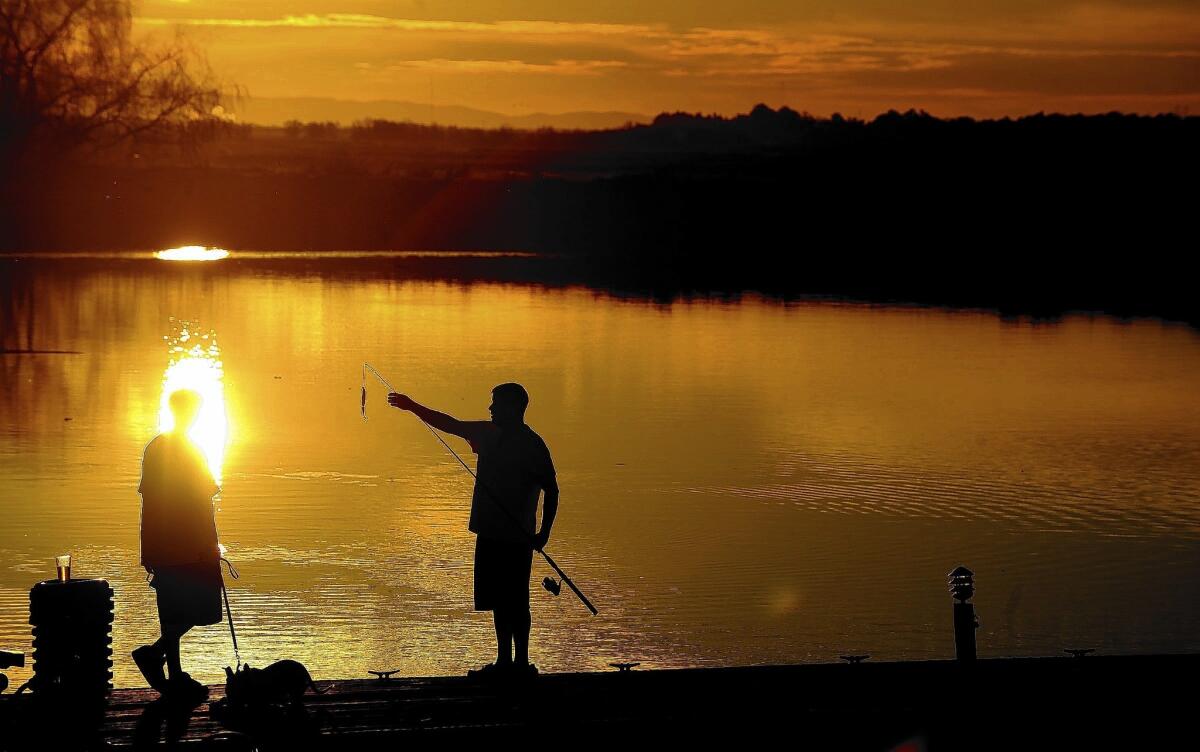February rains ease drought restrictions slightly

- Share via
Thanks to February storms, state officials are slightly easing drought restrictions on water deliveries, but the changes won’t make a difference to most of the state.
The prime beneficiaries will be Central Valley irrigation districts with the most senior water rights.
Although last month’s above average rainfall in Northern California improved the water supply picture somewhat, officials Tuesday continued to predict that the big state and federal water projects that help supply a majority of Californians will deliver little or no water to most agricultural and urban agencies this year.
Still, state officials said they had grown more confident that there was enough water in reservoirs to meet human health and safety needs and provide some supplies for senior rights holders in the Sacramento and San Joaquin valleys.
On Jan. 31, the State Water Resources Control Board issued an emergency drought order, restricting exports from the Sacramento-San Joaquin River Delta to those necessary to meet drinking water and sanitation needs. The curbs were intended to maintain enough fresh water in the delta, the state’s water hub, to prevent seawater from contaminating drinking supplies.
The restrictions, which eliminated exports to even senior agricultural districts in the San Joaquin Valley, were triggered for less than two weeks before February storms dumped enough water into the system to preserve delta water quality without them.
On Tuesday, Tom Howard, the water board’s executive director, signed two amendments to the emergency order. One change allows delta exports beyond human health and safety needs. The second relaxes seasonal environmental requirements for delta outflow that are about to take effect.
Officials said they had cleared the revisions with federal fishery agencies that oversee endangered species protections in the delta.
In two weeks, the Central Valley Project, which primarily serves irrigation districts, and the California State Water Project, which delivers Northern California supplies to the Southland, will update water allocations that were initially set at zero for most agencies.
“My expectation is that that zero probably will not change” for the state project, and “if it does change, not significantly,” said Mark Cowin, director of the California Department of Water Resources.







